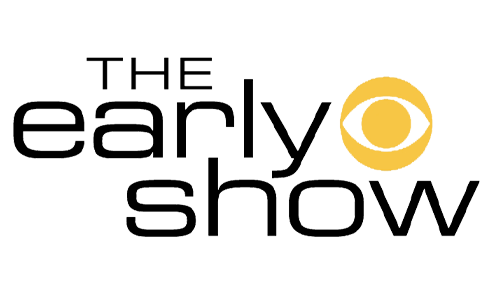May 2, 2019
Do you suffer from very painful menstrual cramps and heavy periods? Does it interfere with your social life and work? Do you literally have to live by your menstrual calendar? You could have uterine fibroids.
Uterine fibroids affect an estimated 20% – 40% of women of childbearing age. (1) While it’s possible to not have any symptoms, for those who do experience symptoms, they can be uncomfortable to the point of needing medical attention.
The good news? These common growths are almost never cancerous, though this doesn’t mean they are without health risks.
Also known of as “leiomyomas” or simply “myomas,” uterine fibroids are non-cancerous growths in the uterus which often appear during childbearing years. They can range in size from too tiny to be seen by the human eye, to large enough to distort the uterus. They can also appear as one single growth, or in extreme cases, multiple growths which can expand into the ribcage. (1)
While uterine fibroid symptoms may not always appear, when they do, they can include:
In rare instances, intense pain may be felt due to a myoma outgrowing its blood supply and dying.
Classification of them is also based on their location in the body. For instance, intramural fibroids exist in the muscles of the uterine walls, submucosal fibroids grow inside the uterine cavity, and subserosal fibroids extend outside the uterus. (1, 2)
There are many indicating factors that could lead to the growth of uterine fibroids. Some doctors believe that a stem cell in the smooth muscles of the uterus is where myomas begin, after which a single cell divides repeatedly to form a growth. These growths are firm and rubbery, and distinctly different from muscles surrounding them, and they may grow slowly, rapidly or not at all. In fact, some may shrink away completely on their own, and may do so after pregnancy when the uterus returns to its normal size. (3)
Other factors which may cause uterine fibroids include:
There are also risk factors known to be associated with uterine fibroids such as:
Keeping in mind that as with most conventional medicine “cures,” these approaches focus on the symptoms rather than the root cause of the problem. This means the problem hasn’t been truly taken care of, so much as placated for now.
That said, conventional uterine fibroid treatments may include:
Due to the danger of hormone-altering medications, radiation levels in ultrasound, and the invasiveness of surgery, a natural approach to myoma prevention and relief is recommended in most cases.
Plus, as mentioned above, conventional treatments focus on the symptoms rather than the cause, which makes conventional medical treatment something of a “revolving door” approach meant to keep you (and your pocketbook) coming back.
That said, natural uterine fibroid treatments focus on the root of the problem, and often have health benefits beyond preventing or treating myomas alone.
These natural treatments include:
While uterine fibroids are rarely life-threatening, they can have painful symptoms along with being a potential sign that your hormone balance isn’t what it should be. This in turn CAN lead to worse health problems.
By managing your weight, eating right and avoiding endocrine disruptors, those of childbearing age stand a better chance of avoiding these benign tumors.
However, and even though a “wait and see” approach can be taken in response to them, allowing them to spiral out of control can not only become painful and debilitating, it can open the door for other health problems associated with their development such as weight gain, heart disease and cancer.
If you are suffering from uterine fibroids, a great place to start is by assessing your hormone status. Take our symptom checker to find out if you have symptoms of hormone decline and find out what could be the underlying cause.
Call our Wellness Consultants today at 281-698-8698 for a complimentary wellness consultation. We believe that you deserve to have a doctor and a team of professionals to coach you onto a path of health and wellness, naturally, without the use of pharmaceutical drugs, so that you can enjoy a better quality of life.
References:
"*" indicates required fields
Since 1989, Hotze Health & Wellness Center has helped over 33,000 patients get their lives back using bioidentical hormones that restore hormones to optimal levels, strengthen immune systems, and increase energy levels. Our treatment regimen addresses the root cause of hypothyroidism, adrenal fatigue, menopause, perimenopause, low testosterone, allergies, and candida.
Led by best-selling author, radio host and leading natural health expert, Steven F. Hotze, M.D., our medical team has over 100 years’ combined medical experience backed by a staff of nearly 100 caring professionals who provide an environment of hope and extraordinary hospitality for each of our patients, who we call our guests. It is our deepest desire to help you obtain and maintain health and wellness naturally so that you may enjoy a better quality of life, pure and simple.
Do you want to live a healthy, happy, purpose-driven life? Do you want to restore your health so that your loss of energy, weight gain, joint pain, depression and lack of drive or motivation won’t hold you back from achieving your personal and professional goals?
Dr. Steven Hotze wants that for you, too. In fact, in his powerful and passionate video entitled, “What I Believe”, Dr. Hotze shares how his Christian worldview and pivotal experiences have ignited a deep desire to offer the message of hope and optimal health to all who need to hear it.









At Hotze Health & Wellness Center, our doctors are changing the way women and men are treated through the use of bioidentical hormones. Our natural treatments have helped over 33,000 individuals with hypothyroidism, adrenal fatigue, menopause, perimenopause, low testosterone, allergies, candida, detoxification and nutritional deficiencies.
Meet our doctors"I went from from having fatigue to regaining my energy, motivation, and drive after age 50!”
Leave a Reply